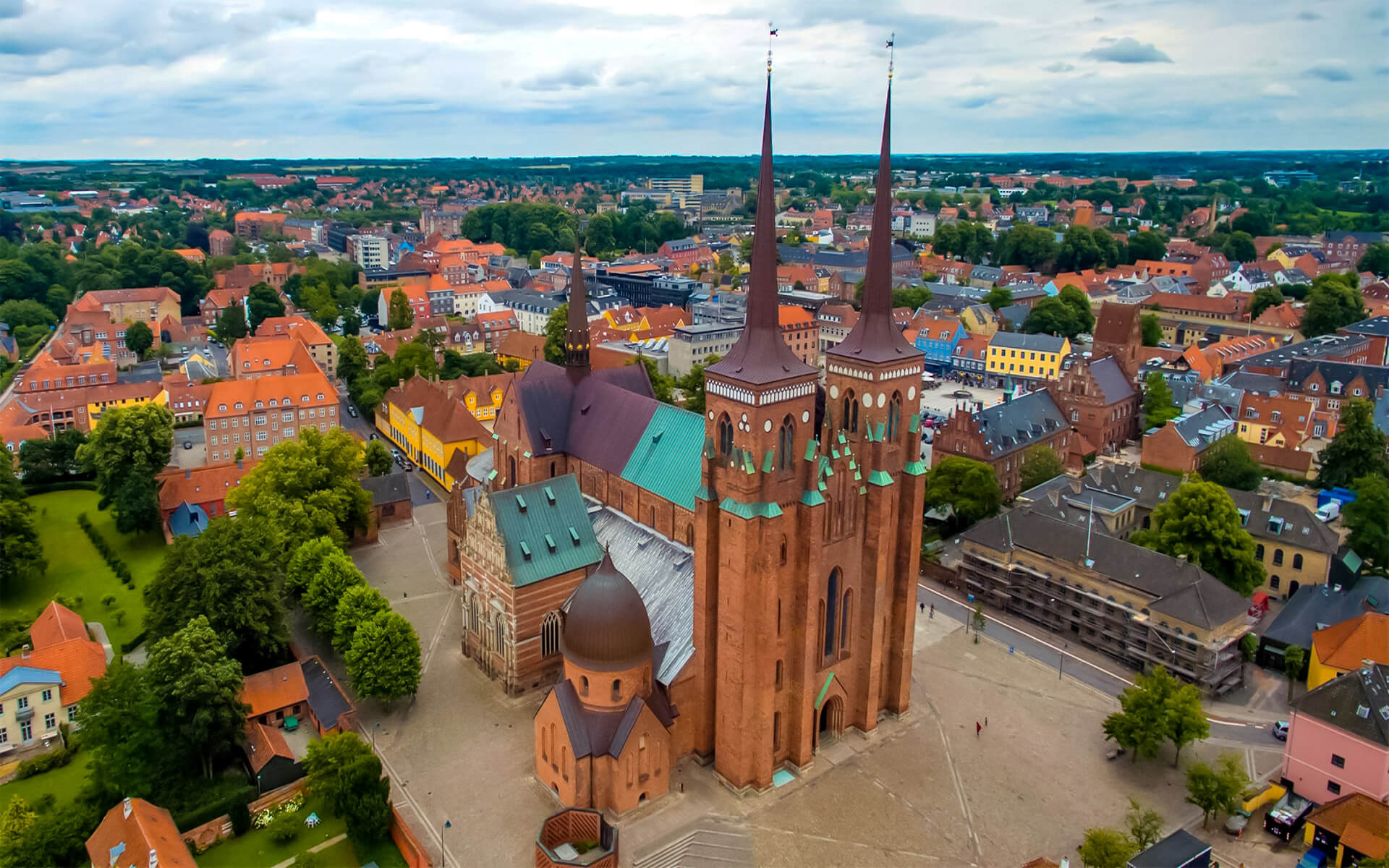[lwptoc]
Roskilde is the principal city of Roskilde Municipality, which is situated 30 kilometers (19 miles) west of Copenhagen on the Danish island of Zealand. With a population of 50,046 (as of 1 January 2016), the city is a regional economic and educational hub, as well as Denmark’s tenth biggest city. Roskilde is managed by the Roskilde Municipality’s administrative council.
Roskilde has a significant history that dates back to the Viking Age before Christianity. Its UNESCO-listed Gothic cathedral, which today houses 39 Danish kings’ tombs, was finished in 1275 and served as a center of ecclesiastical influence until the Reformation. Roskilde became a significant center for commerce with Copenhagen with the expansion of the rail network in the nineteenth century, and by the end of the century, there were tobacco manufacturers, iron foundries, and machine shops. Among the major private sector employment today are the IT business BEC (Bankernes EDB Central) and the plastics firm GPI (Glim Plastic Industri). The Ris research center is also becoming a significant employment, expanding interest in renewable energy into the realm of clean technology. Educational institutions of interest include the local university, which was formed in 1972, the medieval Cathedral School, and the Danish Meat Trade College, which was founded in 1964. Roskilde features a big community hospital that has been extended and updated since its inception in 1855. It is currently becoming more involved in research. The Sankt Hans mental institutions provide forensic psychiatry services to the Capital Region.
More than 100,000 people visit the cathedral and the Viking Ship Museum each year, which houses the well-preserved remnants of five 11th-century ships. Roskilde is popular with shopping due to its two centrally placed pedestrian streets, which are filled with restaurants, cafés, and a variety of stores, in addition to its globally famous tourist attractions and its annual rock festival. The city is home to the FC Roskilde football team, which competes in Denmark’s first division, the Roskilde Vikings RK rugby club, and the Roskilde Roklub rowing club. The city profited from the inauguration of the university and the building of the Holbk Motorway, which connected it to Copenhagen, in the 1970s. Roskilde contains Denmark’s oldest running railway station, with links across Zealand as well as Falster, Lolland, and Jutland. The local airport first opened its doors in 1973, primarily servicing small aircraft for business and flying education.
Absalon, the bishop who founded Copenhagen in the 12th century, L. A. Ring, the symbolist painter who rose to prominence in the 1880s, writer Lise Nrgaard, who created the popular Danish TV series Matador in 1978, and rower Thomas Ebert, who won an Olympic gold medal in 2004 are among the city’s notable citizens.


